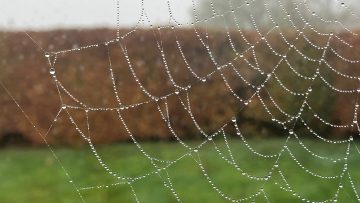Miodrag S. Petkovic
AMERICAN MATHEMATICAL SOCIETY 2009, 325 PAGES
PRICE (PAPERBACK) £27.95 ISBN 978-0-8218-4814-2
 This book essentially looks at puzzles from recreational mathematics that have been tackled by leading professional mathematicians. The criteria for classifying problems as ‘puzzles’ is that the questions are easy to understand but often require advanced mathematical techniques to solve. Some of these were posed in antiquity but the complete solution is accessible only with modern mathematical techniques and computing resources. One example is the Archimedes Cattle Problem which can be formulated as a Diophantine equation. The full solution has 206,545 digits and was completely solved only in 1965. Obviously this would have been beyond the scope of Archimedes. In all there are one hundred and eighty mathematical puzzles. Many (about half) are given with solutions at the end of the chapter.
This book essentially looks at puzzles from recreational mathematics that have been tackled by leading professional mathematicians. The criteria for classifying problems as ‘puzzles’ is that the questions are easy to understand but often require advanced mathematical techniques to solve. Some of these were posed in antiquity but the complete solution is accessible only with modern mathematical techniques and computing resources. One example is the Archimedes Cattle Problem which can be formulated as a Diophantine equation. The full solution has 206,545 digits and was completely solved only in 1965. Obviously this would have been beyond the scope of Archimedes. In all there are one hundred and eighty mathematical puzzles. Many (about half) are given with solutions at the end of the chapter.
There is a great deal of information about the lives of the mathematicians involved. Over sixty short biographies are included in chronological order after the appendices. It is not in any way Eurocentric: the contributions of others including Arabic, Indian and Chinese mathematicians are included. One example is the Persian mathematician Abu’l-Wafa who introduced the trigonometric functions tan, sec and cosec. One thousand years ago his trigonometric tables were accurate to eight decimal places. This is remarkable given the absence of any significant calculating devices, although it is unclear what mathematical techniques such as power series were available.
Many of the puzzles are of historic or cultural significance – Fibonacci’s puzzle How many rabbits? from 1202 may have enhanced that mammal’s reputation for breeding, but it also introduced the Fibonacci sequence for which he is remembered. Several old favourites such as Magic Squares, the Tower of Hanoi and the Bridges of Königsberg are all there. Euler’s negative solution to the former was the beginning of graph theory.
The first chapter gives a brief overview of the history of recreational mathematics. The following nine chapters each look at a particular category such as Arithmetics, Number Theory, Geometry, Tiling and Packing. Finally Chapter 11 is entitled Miscellany, this gives a series of puzzles and problems from seven different mathematicians which do not fit into the other categories. As a challenge for the reader these are given without solutions.
Chapter 8 on Probability is particularly interesting. It portrays the origins of the discipline as a technique for solving gamblers’ quarrels and its early development into a rigorous theory. It is particularly full of surprising results and paradoxes. The Petersburg paradox, a seemingly straightforward problem about tossing coins, baffled mathematicians of the 17th century and leads into infinite series and integral calculus. In fact a theme which permeates the whole book is the way seemingly simple puzzles inspire developments in branches of mathematics.
The title for Chapter 10 is Chess, something of a misnomer since it is not about the game as such. However it includes problems related to the pieces and board such as the Eight Queens puzzle and the Knight’s Tour of the chessboard.
There are several appendices including one on solving Pell’s equation (x 2 −Ny2 =1) by continued fractions. This includes a short computer program written in Mathematica. This and the other appendices give useful background information for understanding the text.
The whole book is very well illustrated with diagrams and pictures as well as clear mathematical formulae making it very readable. The bibliography contains nearly two hundred citations including fifteen for the great Martin Gardner alone! One small grumble: there is an index of names but no index of topics, which is not good for a reviewer.
Overall I would fully recommend the book. It does not require advanced mathematics but it would inspire a curiosity to look further. There is valuable material for a teacher perhaps at Advanced level to introduce new topics by way of a puzzle or two. The book is also a good read for those interested in the history of mathematics and mathematicians.
Francis McGonigal CMath MIMA
Birmingham City University
Mathematics Today April 2012
Famous Puzzles of Great Mathematicians can be purchased at Amazon.co.uk



